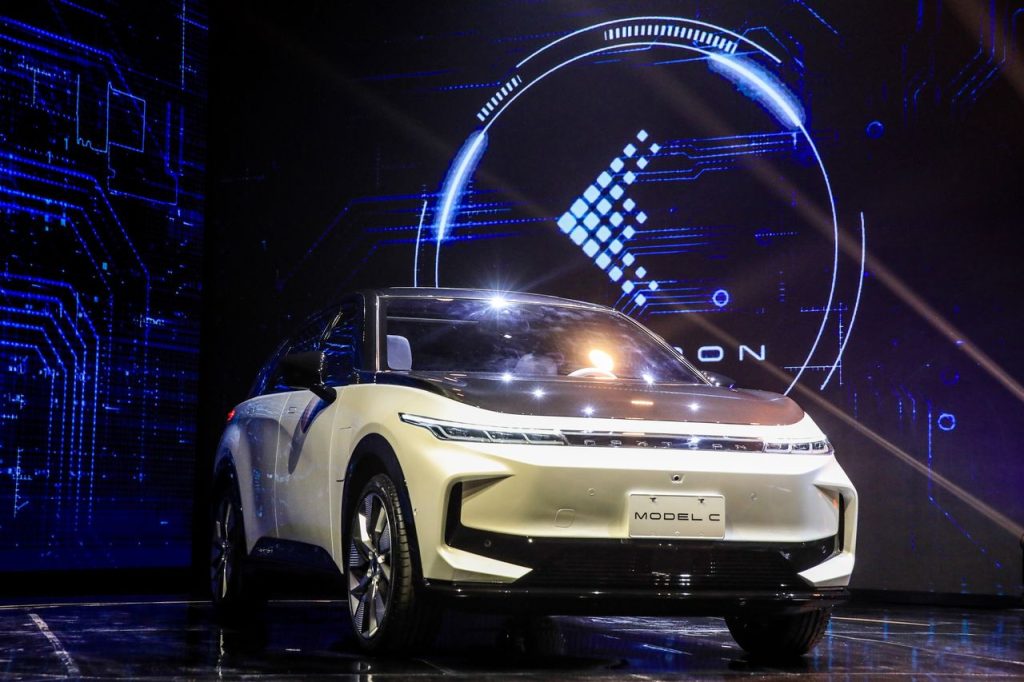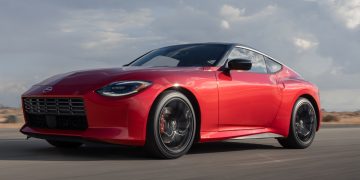Introduction
The future of transportation is shifting toward electric vehicles (EVs). Once considered a niche market, EVs are now gaining mainstream popularity due to advancements in battery technology, government policies, and increasing environmental awareness. As more consumers and automakers embrace electric mobility, the driving experience is expected to be drastically transformed in the coming years.
This article will explore the technologies that will shape the future of electric vehicles and how they will enhance the driving experience. We will examine everything from battery innovations, autonomous driving capabilities, vehicle-to-everything (V2X) communication, to next-generation charging solutions. By understanding these advancements, we can better grasp how the driving experience will evolve as electric vehicles continue to become a dominant force on the roads.
1. Battery Technology: The Heart of the EV Revolution
Battery technology has long been a critical bottleneck in the development of electric vehicles. However, significant strides are being made to improve energy density, reduce charging times, and extend battery life. Some key innovations include:
A. Solid-State Batteries
Solid-state batteries, which replace the traditional liquid electrolyte with a solid electrolyte, promise to revolutionize EV performance. These batteries are lighter, more energy-dense, and safer, reducing the risk of fires and improving overall efficiency. Experts predict that solid-state batteries could be the next big leap in EV technology, providing longer driving ranges and faster charging times.
B. Lithium-Sulfur Batteries
Lithium-sulfur (Li-S) batteries are another promising development, offering higher energy densities compared to current lithium-ion batteries. These batteries are lighter, cheaper, and potentially offer more sustainable options due to the abundant availability of sulfur. As researchers work to overcome challenges related to durability and efficiency, Li-S batteries could be the next frontier in EV power storage.
C. Faster Charging Technology
Charging speed remains one of the most important factors for EV adoption. Technologies like ultra-fast charging stations and breakthroughs in charging infrastructure (such as Tesla’s Supercharger network) aim to significantly reduce charging times. Some developments in high-power charging could allow EVs to reach 80% battery capacity in as little as 15 minutes.
D. Battery Recycling and Sustainability
As EV adoption grows, battery recycling will become crucial to reducing environmental impact. Innovations in battery recycling methods could help make electric vehicles even more sustainable by reusing critical materials, reducing waste, and cutting down on the need for mining.
2. Autonomous Driving: Redefining the Driving Experience
Autonomous driving technology is one of the most exciting advancements in the automotive industry. While full autonomy (Level 5) may still be years away, significant progress is being made in making vehicles smarter, safer, and more efficient. Key developments include:
A. Advanced Sensors and Cameras
Modern EVs are already equipped with a range of sensors, cameras, and lidar systems that allow for semi-autonomous driving features such as adaptive cruise control, lane-keeping assistance, and automatic braking. As these technologies evolve, future EVs will be able to navigate without human intervention in most scenarios.
B. AI and Machine Learning
Artificial intelligence (AI) and machine learning will play a crucial role in the development of autonomous driving. AI systems can process vast amounts of data from the vehicle’s sensors in real-time to make intelligent decisions, improving the accuracy and safety of autonomous features.
C. Vehicle-to-Vehicle (V2V) and Vehicle-to-Infrastructure (V2I) Communication
In the future, EVs will communicate not only with each other (V2V) but also with surrounding infrastructure (V2I). This technology will allow cars to share information about road conditions, traffic, and potential hazards, leading to smoother traffic flow, fewer accidents, and optimized driving routes. This connected ecosystem could revolutionize how vehicles interact with their environment.
D. Enhanced Safety Features
Autonomous vehicles are expected to significantly reduce traffic accidents caused by human error. Technologies such as automatic emergency braking, lane-keeping assist, and collision detection systems will work together to enhance the overall safety of the vehicle, making driving more secure and reliable.

3. Charging Infrastructure: The Backbone of EV Adoption
One of the most significant challenges to the widespread adoption of electric vehicles is the availability of charging infrastructure. However, advancements in charging networks and battery technologies are making it easier than ever for EV owners to find convenient and fast charging solutions.
A. Wireless Charging
Wireless charging, or inductive charging, is a cutting-edge technology that allows EVs to charge without needing to plug into a traditional charging station. Using electromagnetic fields to transfer energy from a charging pad embedded in the ground to a receiver in the vehicle, wireless charging could make the process of recharging an EV more seamless and convenient.
B. Ultra-Fast Charging Stations
Many major EV manufacturers and charging network operators are investing heavily in ultra-fast charging stations. These stations can provide enough energy to charge a vehicle in 15 to 30 minutes, making long-distance travel in EVs more feasible. Companies like Tesla, Ionity, and others are expanding their charging networks to meet the growing demand for fast, accessible charging options.
C. Smart Charging and Grid Integration
Smart charging solutions will allow EVs to integrate seamlessly with the power grid. By using algorithms and machine learning, EVs could be charged at times when electricity demand is low, helping to stabilize the grid and reduce energy costs. Additionally, vehicle-to-grid (V2G) technology could allow EVs to return power to the grid during peak demand times, making them a potential asset for energy storage and distribution.
D. Home Charging Solutions
At-home charging systems are becoming more advanced, with options for faster and more efficient home charging setups. Some systems allow for energy management, enabling homeowners to use solar power or low-cost electricity at night to charge their vehicles, further enhancing the convenience of EV ownership.
4. Vehicle Design and Customization: Creating the Ideal EV
As more automakers enter the electric vehicle market, the design of EVs is rapidly evolving. Innovations in aerodynamics, interior design, and user interface technology are reshaping the driving experience.
A. Aerodynamics and Lightweight Materials
EV manufacturers are focusing on improving aerodynamics to reduce drag and increase energy efficiency. The use of lightweight materials such as carbon fiber, aluminum, and advanced composites is helping reduce vehicle weight, which in turn enhances range and overall performance.
B. User-Centric Interiors
The interior design of future EVs will be more focused on comfort, convenience, and flexibility. The absence of a traditional engine allows for more innovative cabin layouts. Features such as customizable digital dashboards, augmented reality displays, and advanced infotainment systems will enhance the in-car experience.
C. Sustainability in Materials
The materials used in the production of EVs are also becoming more sustainable. From eco-friendly fabrics and recycled materials in the cabin to biodegradable parts and sustainable production practices, automakers are embracing sustainability at every level of vehicle development.
D. Personalized Driving Experience
With the integration of advanced software and artificial intelligence, EVs will be able to personalize the driving experience based on the driver’s preferences. From seat adjustments and climate control to driving modes and navigation, EVs will learn from the driver’s habits and tailor the experience to optimize comfort and convenience.
5. The Role of Artificial Intelligence and Data in EV Evolution
AI and big data are transforming how electric vehicles function, improve, and interact with their drivers. From predictive maintenance to personalized driving experiences, data-driven technologies are creating smarter vehicles.
A. Predictive Maintenance
AI-powered systems can analyze data from vehicle sensors to predict when maintenance is needed, potentially preventing breakdowns and reducing repair costs. This technology also allows manufacturers to optimize vehicle performance and improve overall reliability.
B. Over-the-Air (OTA) Updates
Many modern electric vehicles can receive over-the-air updates, allowing manufacturers to improve software, fix bugs, and even add new features without requiring a visit to the service center. This capability ensures that EVs stay up-to-date with the latest advancements in technology and user experience.
C. Data-Driven Performance Enhancements
By collecting and analyzing driving data, EVs can continuously optimize performance, including energy usage, driving behavior, and route planning. AI algorithms will be able to improve battery management, regenerative braking, and other systems to maximize efficiency.
Conclusion
The future of electric vehicles is undeniably exciting. From breakthroughs in battery technology to the rise of autonomous driving, the innovations coming down the pipeline promise to fundamentally transform the driving experience. While some of these technologies may take years to fully implement, the journey toward a fully electric, connected, and autonomous future is well underway.
As consumers, automakers, and governments continue to push for cleaner, safer, and more efficient transportation, we can expect the driving experience of tomorrow to be unrecognizable from what we know today. The future of electric vehicles holds the promise of a smarter, more sustainable, and more enjoyable driving experience for all.


































Discussion about this post